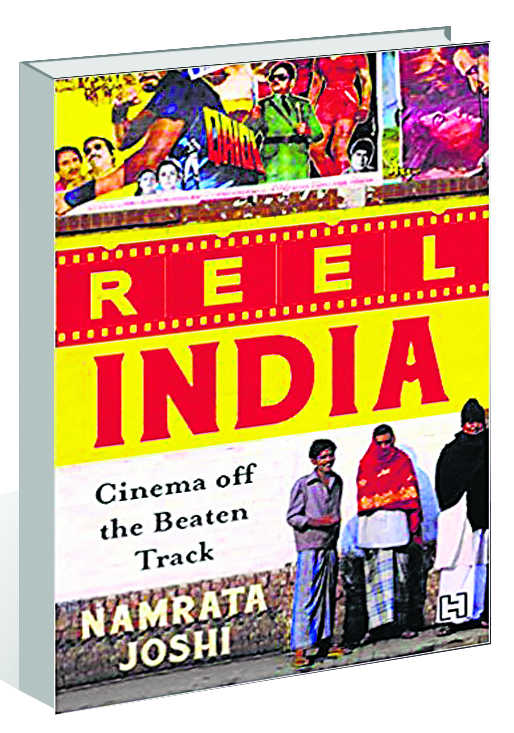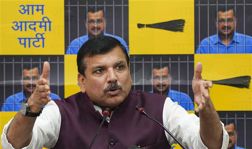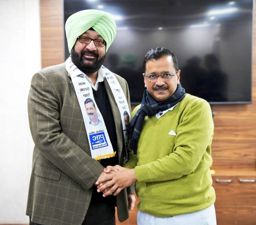
REEL INDIA: CINEMA OFF THE BEATEN TRACK by Namrata Joshi. Hachette. Pages 252 Rs 599
Rituparna Sengupta
Veteran film critic Namrata Joshi’s book trains its seasoned eye on the multiple meanings of cinema away from urban multiplex India. It functions as an important introduction to the diversity of small-town India, replete with its cinema-centred fixations, aspirations, and disappointments. Within its ambit lie Maharashtrian tent screenings, quaint Tibetan video parlours, and Ahmedabad’s drive-in cinema.
There are inspiring stories of those who have made it their mission to take the pleasures of cinema to the deprived, those who use cinema for sensitisation, and those who have spent their personal resources over a lifetime to preserve records of cinematic history. The cataloguing of offbeat independent film festivals in interior India and the descriptions of how filmmaking is helping tribal communities in telling their stories of deprivation, are nothing short of educational.
Turning away from the glamour of mainstream cinema, the book also speaks of films made for local consumption and sponsored by vegetable vendors and farmers. And lest it become too Mumbai-centric, the book introduces the reader to the ‘feel bad’ Cine Madurai that is a genre in itself, and the escapist thrill of the resourceful community film-making of Malegaon.
It serves as a survey of sorts of the journey of Indian cinema over the ages — from the cinema reel and aura of the unapproachable idol, to the video cassette and rise of the consumable popular star, to easy digital access of both film and celebrity.
The first two chapters present the book’s larger claim that cinema culture in India is anything but uniform. A Town Divided shows us how within the same town, Salman Khan has earned both, hero worship and unforgiving censure. In Fans and Fandoms, if an obsessive Shah Rukh Khan fan in Lucknow has arranged his life around earning the acknowledgement of his idol, there is also mention of ‘purane Bhopal ka John’, who is content with the distance of the star as a ‘proxy friend’.
If there are insightful descriptions of the widespread local economies that the film industry has generated across the country, there is also a sobering reminder that cinema is ‘dead’ in Kashmir.
As Joshi lays out the fascinating landscape of heartland India, with nondescript towns, each possessing its local Bollywood lore, we witness the power of the mythology of cinema and how otherwise unremarkable towns draw their very identity from their location in the wider cinemascape.
The last chapter reflecting on the recent trend of Bollywood’s choice of smaller towns as setting, differentiates films that treat place as character, from those with pretensions to provinciality. The preceding chapter carries accounts of small-town actors who have made it big in Bollywood, and their nostalgic recollection of introduction to cinema in their youth. The descriptions of the ‘colourful and whimsical’ small-town community cinema-viewing experience, with its shirt-tearing, coin-throwing rituals appearing bewildering to those of us habituated to a restrained urban experience, attains charm in the respectful gaze of the author. One is compelled to suspend one’s jaded, judgmental city view to wonder at the purely affect-laden, intensely personal and collective immersive experience that informs cinema-viewing away from metro cities.
The strength of the book lies in the depth of its engagement with the voices of ordinary, amateur folk. Where the book falters, at times, is when, instead of dwelling on individual cases, it moves quickly, listing out several manifestations/variations of a theme, or when it squeezes in too many quotes in succession. Additionally, the chapter on ‘spoofs’ gets a tad cumbersome, inexplicably including allusions to regional and sub-regional cinema in general.
There is a striking near absence of female voices in the book, barring the author’s own, and I was expecting Joshi to expand on the glimpse into female consumption and desire with which she begins her ‘Introduction’.
Overall, the book would be of interest not only for the cinema aficionado, but also for students of popular culture, mindful of the importance of production, distribution, and consumption practices. Ultimately, the book inspires a range of emotions — amusement, nostalgia, respect, and finally awe, at the sheer depth of Indian cinema’s percolation into the ordinary Indian’s life.



























